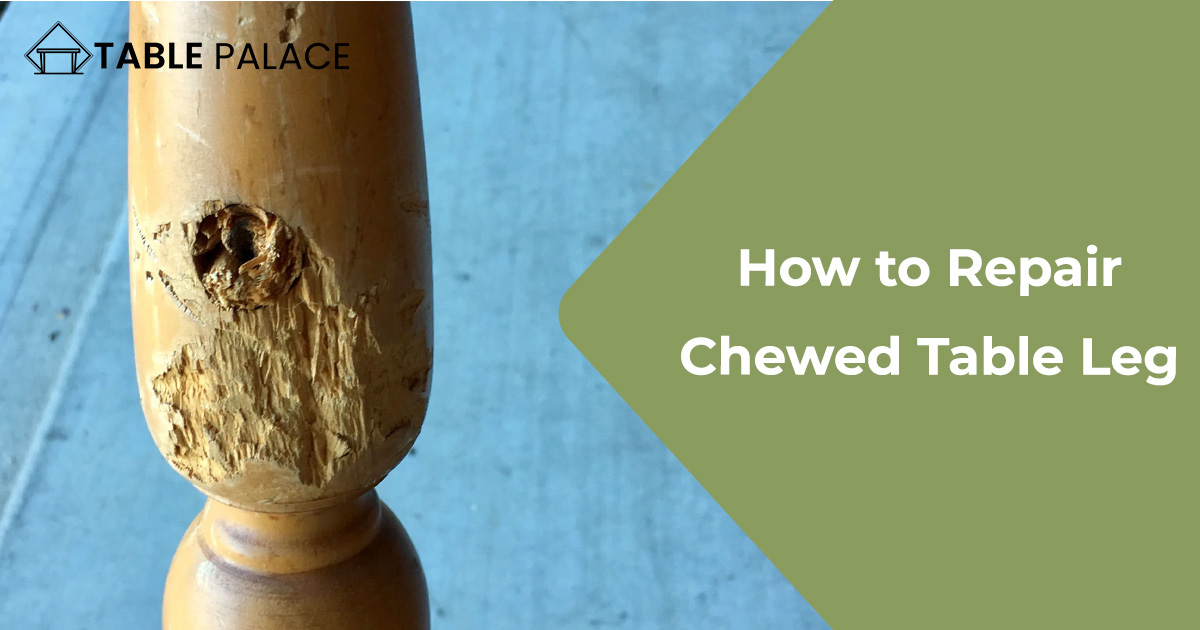Are you tired of staring at your chewed-up table leg? A damaged table leg can be a real eyesore, whether due to a teething puppy or a mischievous toddler. But don’t worry, repairing a chewed table leg is easier than you think! In this blog post, we’ll go over step-by-step instructions on repairing a chewed table leg and making it look as good as new. We’ve got you covered from gathering materials to applying the finishing touches. So let’s dive in and get that table looking great again!
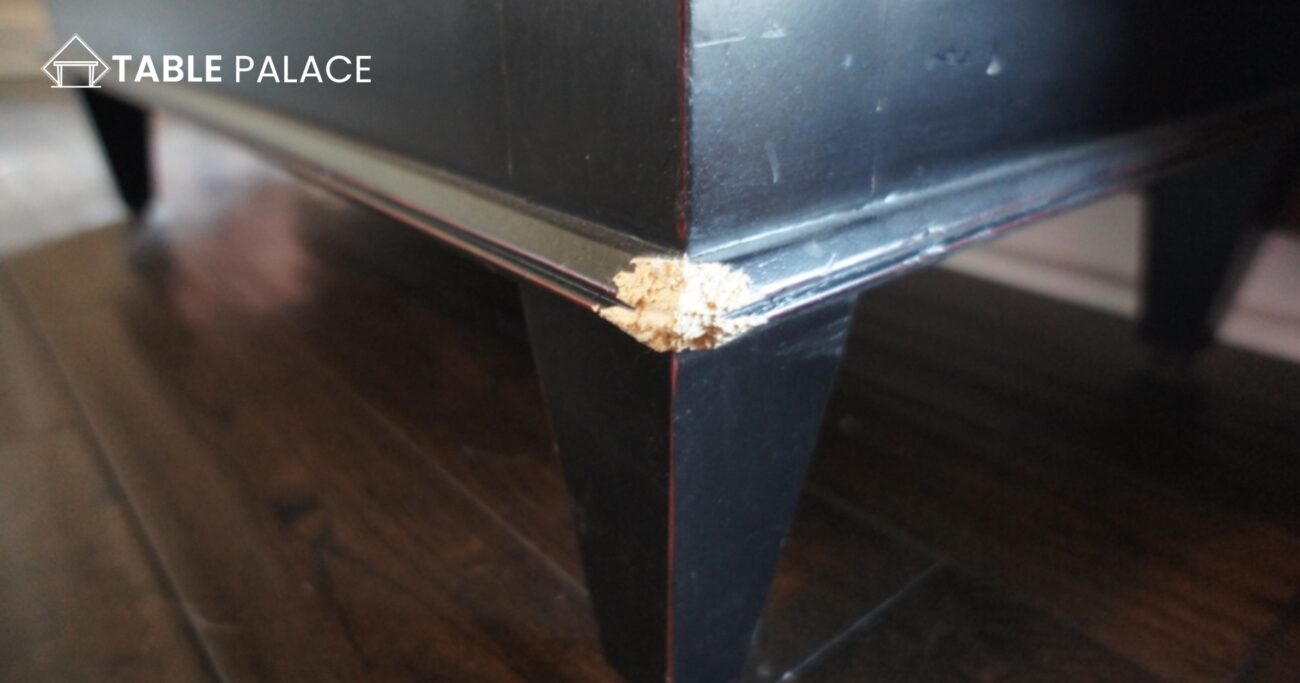
Is it easy to repair chewed table legs?
Sometimes chewing on furniture can do a number on our chairs. Left untreated, or even worse, not repairable at all – that is not only very unpleasant to look at but also a potential safety hazard.
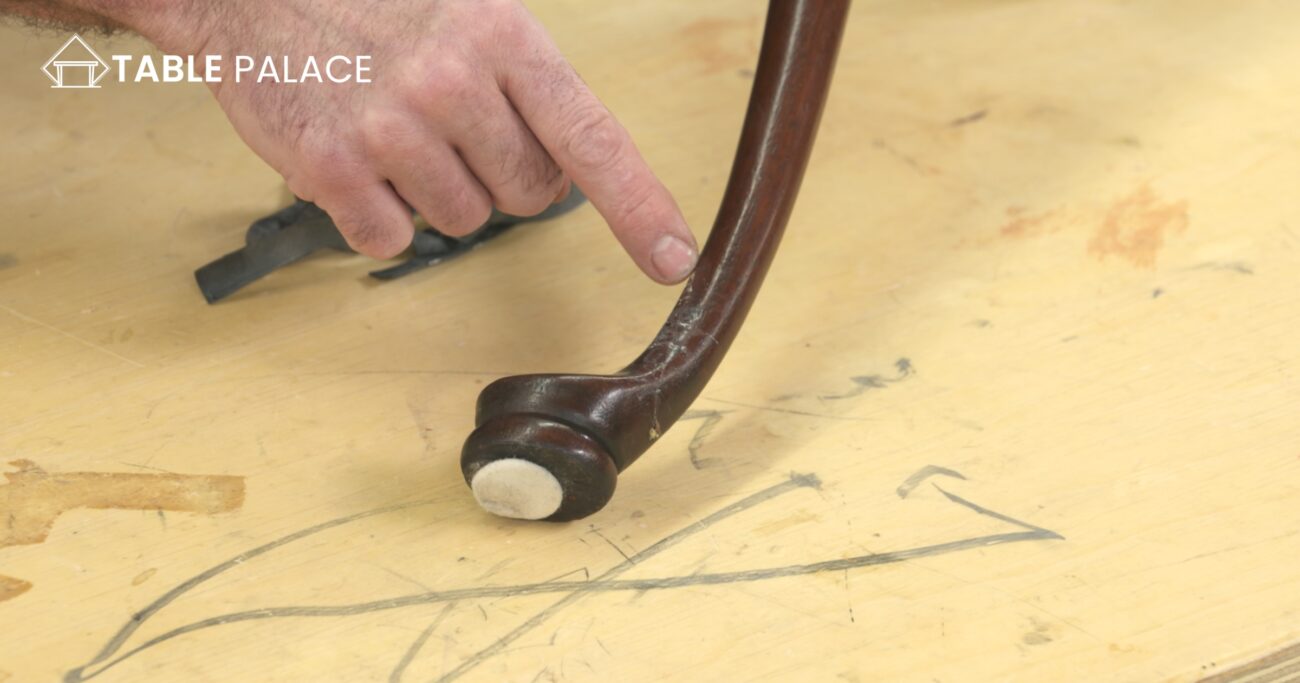
Thankfully, repairing a chewed table leg doesn’t have to be a cause for panic. With the right materials, like furniture repair filler and sandpaper, it’s easier than you think! When repairing chewed furniture, all steps are relatively quick and simple; most projects take less than an hour to complete.
Ensure you get your repair materials from reliable places, so you know the repair will last as long as possible. Repairing furniture and chair legs is an invaluable skill that should be considered!
How to Repair Chewed Table Leg- Step-by-Step Guide
Materials Needed:
- Wood filler (such as epoxy wood filler)
- Putty knife
- Sandpaper (0/2–5)
- Wood polish
- Paint or stain (optional)
Step-by-Step Repair furniture Process:
-
Clean the chewed area and remove any loose or splintered wood.
-
Mix the wood filler according to the manufacturer’s instructions.
-
Use a putty knife to apply the filler to the chewed area, filling in the chew marks.
-
Allow the filler dry completely.
-
Sand the surface of the repaired area to create a smooth and level surface, blending the filler with the surrounding wood.
-
If necessary, apply another coat of filler to create an even surface and fill any remaining chew marks.
-
Sand the surface again to ensure a smooth and level surface.
-
If desired, apply paint or stain to match the rest of the table leg.
-
Finish by polishing the surface of the leg with wood polish.
Alternative Solutions:
If the chewed area is too large or the damage is too severe, you may need to consider alternative solutions for repairing your furniture. Some options include:
- Replacing the damaged section: This option involves removing the chewed section of the table leg and replacing it with a new piece of wood. This solution is best for furniture with solid wood construction and may require additional tools and materials.
- Covering with a veneer: This option covers the chewed area with a thin layer of wood veneer, which can be found at most home improvement stores. The veneer is applied over the damaged area and can be sanded, stained, and polished to match the surrounding wood. This solution is best for furniture with a veneered construction and may require additional tools and materials.
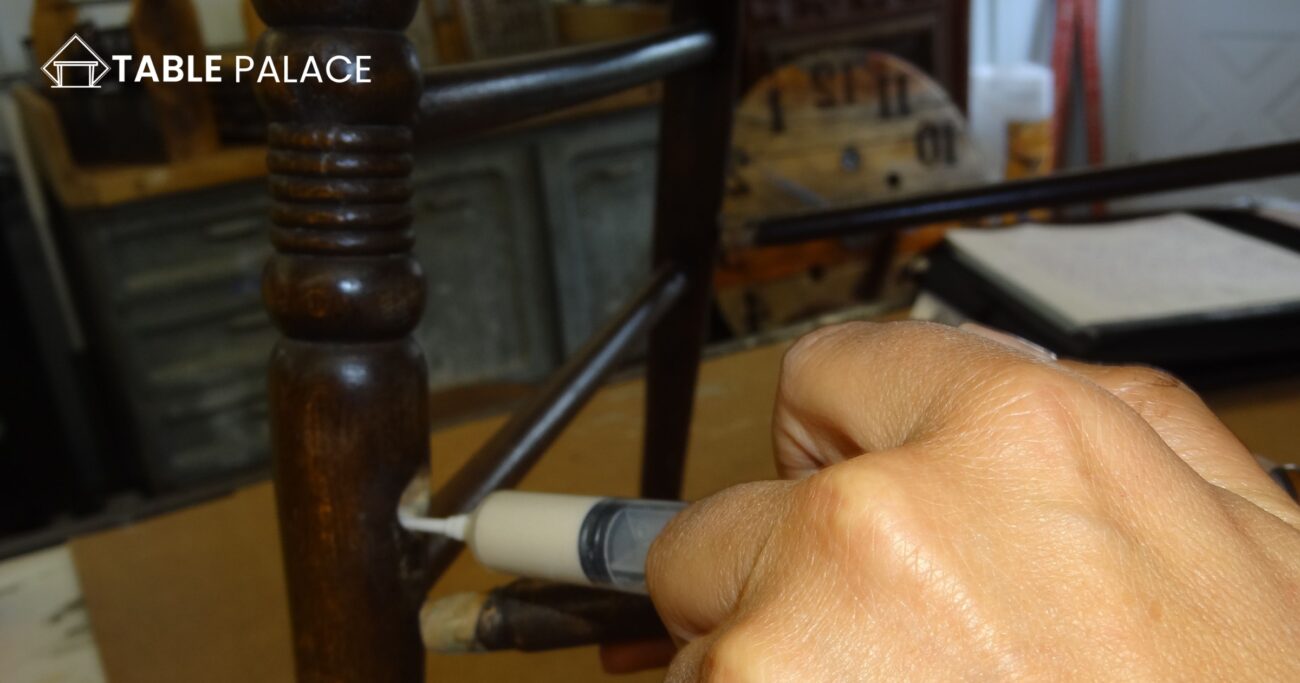
Maintenance and Prevention:
To avoid future damage from chewing, it’s important to consider training and protection for your furniture to avoid future damage from chewing.
- Training: Consistent training for your dog can help prevent chewing on furniture. Consider using positive reinforcement techniques and providing chew toys as alternatives for your dog to chew on.
- Protection: Furniture protectors, such as slipcovers or protective films, can be applied to the furniture’s surface to discourage chewing. Additionally, regular cleaning and maintenance can help maintain the appearance and longevity of your furniture, making it less appealing for your dog to chew on.
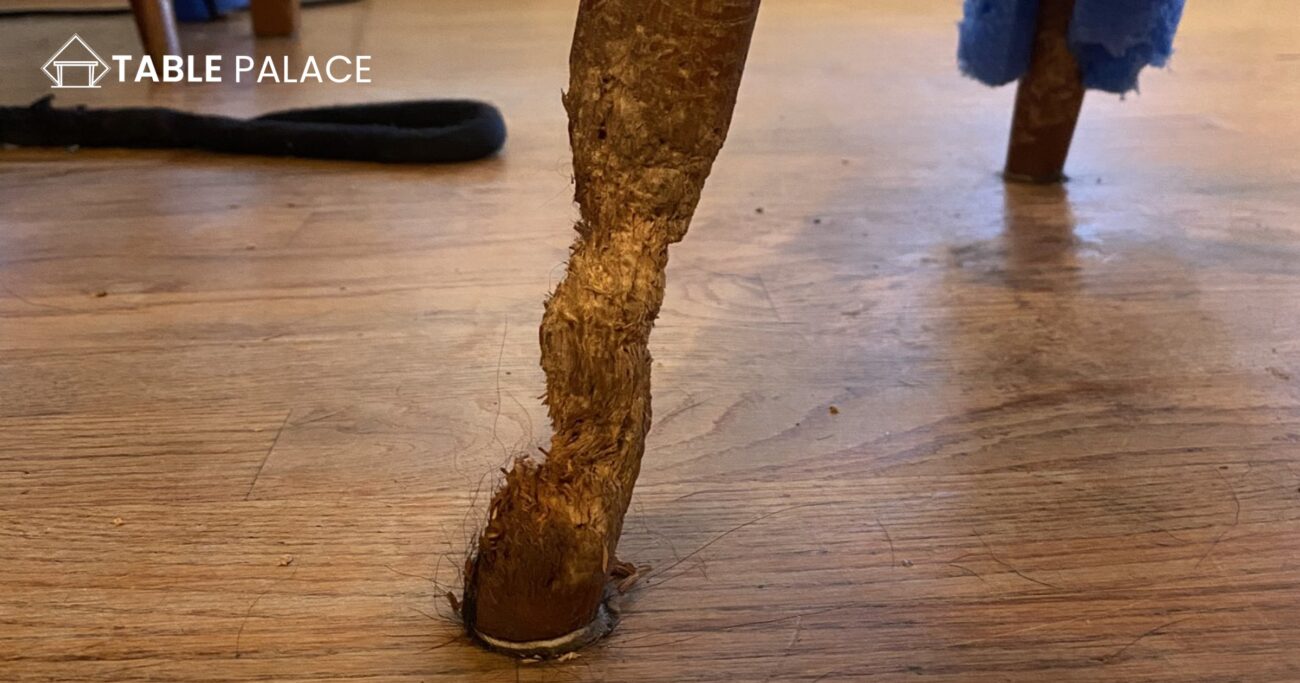
By taking the time to train your dog and protect your furniture, you can prevent future damage and maintain the appearance and longevity of your furniture for years to come.
Video Guide
Conclusion
In conclusion, repairing a chewed table leg is a simple and cost-effective solution for damaged furniture. With the right materials and a few steps, you can fix the problem and have a beautiful table leg again. And, of course, a happy dog who no longer feels the urge to chew on your furniture.
FAQs
How do you fix a chewed table?
When your beloved pet has gone a bit too far, and you find your furniture chewed up, don’t fret. Just repair it! Repairing furniture can sometimes be cheaper than replacing it and can be performed with simple materials. To repair a dog-chewed table, gather the supplies you’ll need: sawdust and wood glue, tongs, clamps, sandpaper and paint. First, determine how to repair the table by looking at the damage.
Use the sawdust to fill any holes or gouges in the frame, followed by applying wood glue to hold it in place if needed. Afterward, clamp the piece of wood securely as it dries for a few hours before you sand away any leftover debris. Paint the area last so your repair does not stick out like a sore thumb – the result being repair success!
How do you fix chewed corners on furniture?
Repairing chewed corners on furniture does not have to be difficult. The good news is that it can be an easy repair for any level of a do-it-yourselfer when done correctly. Start by cleaning up the wood pieces and sanding the rough edges until both sides are smooth. If the damage is extensive, use a saw to remove some of the material from the damaged chair leg, then fill the area with dry filler. Once it is set and fully dried, sand it again until you rematerialize the shape of the corner. Finally, file down all sharp corners with sandpaper and finish your repairs with some furniture repair varnish or lacquer to protect it from further wear and tear!
How do you fix bite marks on wood furniture?
Fixing bite marks on wood furniture is similar to repairing a chewed table leg. Clean the chewed area, fill in the chew marks with wood filler, sand the surface to create a smooth and level surface, and polish the surface with wood polish.
How do you fix wood trim chewed by a dog?
Fixing chewed wood trim is similar to repairing a chewed table leg. Clean the chewed area, fill in the chew marks with wood filler, sand the surface to create a smooth and level surface, and polish the surface with wood polish.

